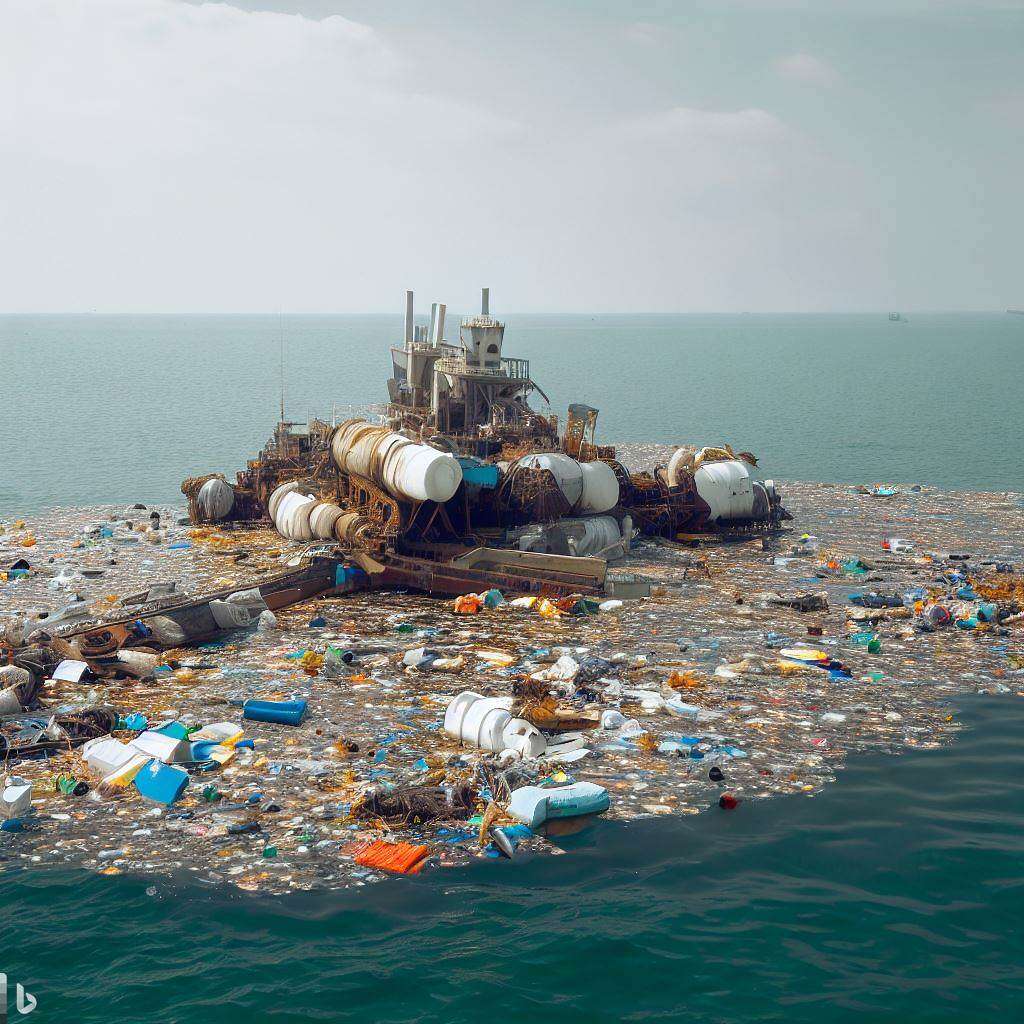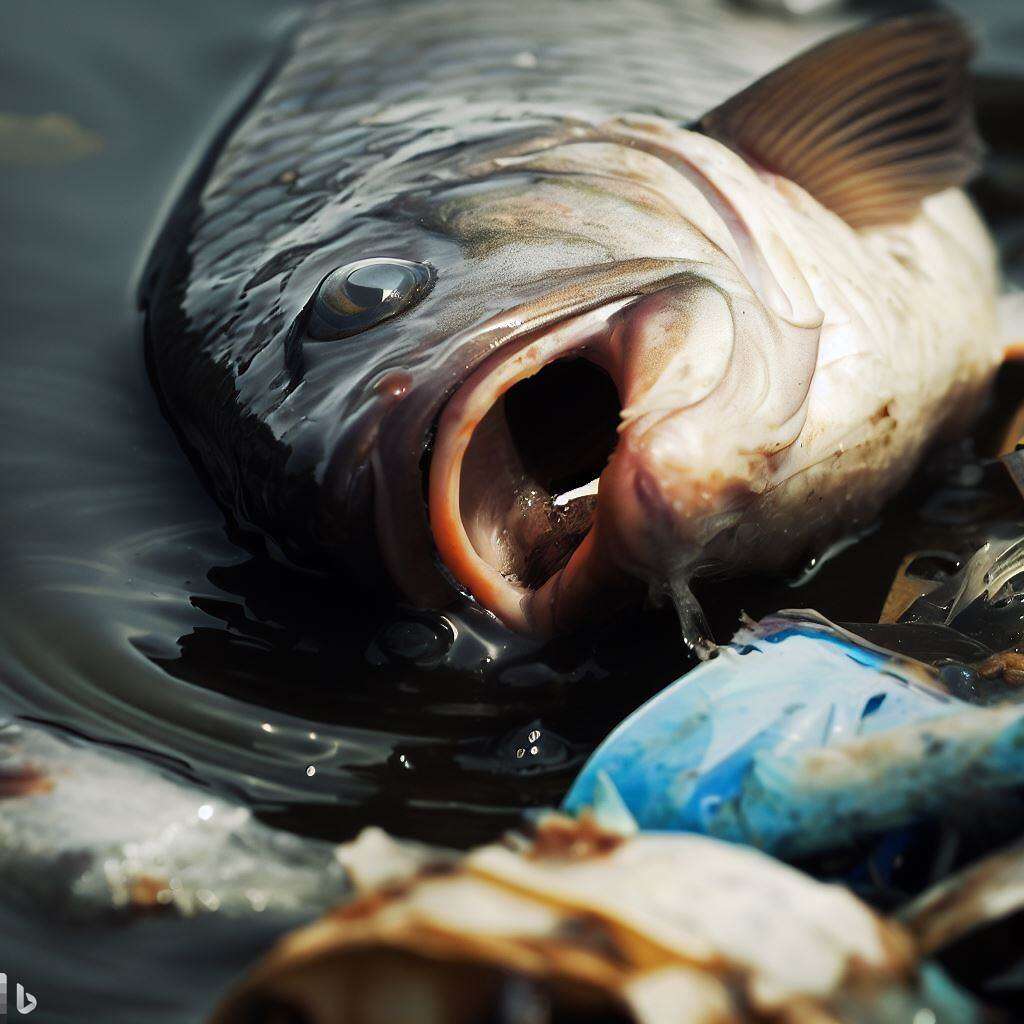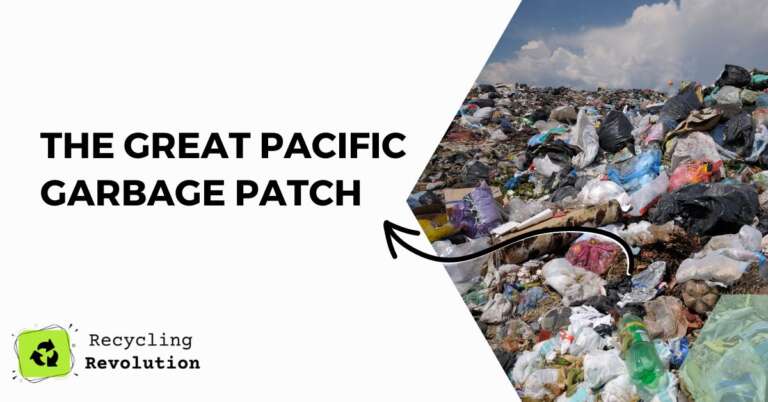Are you aware of the Great Pacific Garbage Patch?
If not, it’s time to learn about this major environmental issue that’s affecting our oceans, marine life, and even our own health.
The Great Pacific Garbage Patch is a massive collection of plastic debris that’s trapped by ocean currents in the North Pacific Ocean, creating a floating landfill that’s twice the size of Texas and can be easily spotted from space! Here’s what you need to know:
What is the Great Pacific Garbage Patch?
This is where we start.
The Great Pacific Garbage Patch is a collection of plastic debris that’s been accumulating in the North Pacific Ocean for decades.
This floating landfill is created by ocean currents that trap plastic debris and other garbage in one location, creating a swirling mass of waste that is nearly impossible to clean up.
When Was the North Great Pacific Garbage Patch Discovered
The North Pacific Garbage Patch, also known as the Great Pacific Garbage Patch, was discovered in the late 1980s by a sailor and oceanographer named Charles Moore.
Moore was sailing from Hawaii to California when he noticed an unusually high concentration of plastic debris in the ocean.
This led him to investigate further and eventually led to the discovery of the Great Pacific Garbage Patch.
Since its discovery, the Great Pacific Garbage Patch has become a symbol of the plastic pollution crisis facing our oceans.
While efforts are underway to address the issue, plastic pollution continues to be a significant problem, threatening marine life, ecosystems, and human health.
What Caused The Great Pacific Garbage Patch
The Great Pacific Garbage Patch is primarily caused by human activities, including improper disposal of plastic waste, ocean dumping, and littering.
The plastic debris in the ocean is carried by ocean currents, converging in certain areas, creating the patch.
The patch is also perpetuated by the continuous influx of plastic waste into the ocean.
Plastic pollution in the ocean is caused by a variety of human activities, including:
- Improper disposal of plastic waste: Many plastic products end up in the ocean because of inadequate waste management practices. Plastic waste is either not disposed of properly or not recycled, leading to the accumulation of plastic debris in the ocean.
- Littering: Littering is a significant contributor to plastic pollution in the ocean. When people litter, plastic waste often ends up in rivers, lakes, and oceans, where it can cause harm to marine life and ecosystems.
- Ocean dumping: Some companies and countries engage in ocean dumping, which involves disposing of waste, including plastic waste, directly into the ocean. This practice can lead to the accumulation of plastic debris in certain areas, like the Great Pacific Garbage Patch.
- Lack of recycling: Despite the efforts to promote recycling, a significant portion of plastic waste is not recycled, which contributes to the plastic pollution problem.
Understanding the Size
To give you an idea of the scale of the Great Pacific Garbage Patch, it is estimated to be approximately 1.6 million square kilometers in size, which is about three times the size of France or about twice the size of Texas.
This area is not a solid mass of garbage, but rather a concentration of plastic debris, which can vary in size from large discarded fishing nets to small microplastics that are almost invisible to the naked eye.

While the Great Pacific Garbage Patch is the largest known accumulation of plastic debris in the ocean, it is not the only one.
There are other areas in the ocean where plastic debris accumulates, such as the North Atlantic garbage patch and the Indian Ocean garbage patch.
Why Large Debris Matter?
Large debris is a major issue because it can cause significant harm to marine life.
For example, plastic bags and fishing nets can entangle and suffocate marine animals, while larger plastic items can block their digestive tracts, leading to starvation.
Some species, like sea turtles, mistake plastic bags for jellyfish and ingest them, leading to fatal consequences.
Plastic waste also poses a significant environmental hazard, breaking down into microplastics that are consumed by marine organisms and enter the human food chain.
What are the Effects on Marine Life and Humans?
The effects of plastic pollution on marine life are devastating.
Large debris can cause entanglement and ingestion, while smaller debris like microplastics can harm the digestive and reproductive systems of marine organisms.
These harmful substances can eventually end up in our own bodies when we consume contaminated seafood.
According to one study, the average person ingests approximately 5 grams of plastic per week through seafood consumption.

Affects the Human Food Chain
Speaking of seafood consumption, plastic pollution is also affecting the human food chain.
As we’ve already mentioned, contaminated seafood can lead to health risks like mercury poisoning and microplastic ingestion.
This is not only a serious health risk for individuals but also for the fishing industry, as consumers may turn to alternative food sources due to concerns about contaminated seafood.
Affects the Economy
The economic impact of plastic pollution is significant.
It’s estimated that plastic pollution could cost the fishing and tourism industries billions of dollars per year.
The cost of cleaning up plastic pollution falls on governments and taxpayers, with some estimates suggesting that cleanup costs could reach $2.2 billion per year by 2025.
The Call to Action
It’s clear that something needs to be done about the Great Pacific Garbage Patch and plastic pollution in general.
Here are some steps you can take to help make a difference:
- Reduce your use of plastic products, especially single-use items like straws and plastic bags
- Support ocean cleanup efforts by donating to organizations like The Ocean Cleanup and the Ocean Conservancy
- Spread the word and raise awareness about the impact of plastic pollution on our environment and health
The Great Pacific Garbage Patch is a growing environmental disaster that gets little publicity requires immediate action.
By taking steps to reduce your use of plastic products and supporting ocean cleanup efforts, you can help make a difference and protect our oceans and marine life for future generations.
The Role of Governments and Industries
While individuals can make a significant impact, governments and industries also have a crucial role to play in reducing plastic pollution.
Governments can introduce legislation to ban single-use plastic products, promote recycling, and enforce regulations to reduce plastic waste in the ocean.
Industries can also take responsibility for their plastic waste by implementing sustainable practices, investing in research and development for biodegradable materials, and reducing packaging waste.
| Organization Name | Description | Size | Funding | Website |
|---|---|---|---|---|
| The Ocean Cleanup | A non-profit organization focused on removing plastic debris from the ocean using advanced technologies, such as large floating barriers and vessels equipped with advanced technology. | 100+ | Donations, corporate sponsors | https://theoceancleanup.com/ |
| 4Ocean | A for-profit company that removes plastic waste from the ocean and coastlines through cleanup efforts and selling bracelets made from recycled materials. | 51-200 | Sales revenue, donations | https://4ocean.com/ |
| Ocean Conservancy | A non-profit organization that works to protect and restore the ocean through policy advocacy, scientific research, and education. The organization also leads annual beach cleanup efforts around the world. | 51-200 | Donations, grants | https://oceanconservancy.org/ |
| Plastic Oceans | A non-profit organization dedicated to raising awareness about plastic pollution and promoting solutions through education and partnerships with governments, businesses, and other organizations. | 11-50 | Donations, grants | https://plasticoceans.org/ |
| Project Aware | A non-profit organization that works to protect the ocean through dive cleanups, policy advocacy, and education. The organization also promotes sustainable diving practices to reduce the impact of diving on the ocean. | 11-50 | Donations, grants | https://www.projectaware.org/ |
| Seabin Project | A non-profit organization that has developed a floating device that can collect plastic debris, oil, and other pollutants from marinas, ports, and other bodies of water. | 11-50 | Donations, corporate sponsors | https://seabinproject.com/ |
| Surfrider Foundation | A non-profit organization that works to protect the ocean, waves, and beaches through policy advocacy, education, and cleanup efforts. The organization has chapters around the world that lead local cleanup efforts and advocate for policy changes at the local and national levels. | 201-500</ | Donations, grants | https://www.surfrider.org/ |
Education and awareness are also vital in the fight against plastic pollution.
By educating individuals on the impact of plastic pollution and providing resources to help them reduce their plastic use, we can inspire change and create a culture of sustainability.
Many schools and universities are incorporating environmental education into their curricula, and businesses are implementing sustainability programs to reduce their environmental footprint.
The Future of the Great Pacific Garbage Patch
Despite the severity of the problem, there is hope for the future of the Great Pacific Garbage Patch.
Advances in technology have led to the development of innovative solutions to address plastic pollution, such as The Ocean Cleanup’s passive plastic collection system.
The use of biodegradable materials and the adoption of circular economy principles also offer promising solutions.
Conclusion
The Great Pacific Garbage Patch is a growing environmental disaster that poses a significant threat to our oceans, marine life, and even our own health.
While the problem may seem overwhelming, there are steps that individuals, governments, and industries can take to address plastic pollution and protect our environment.
By reducing our use of plastic products, supporting ocean cleanup efforts, and promoting education and awareness, we can work together to create a sustainable future for generations to come.
FAQ
How big was the Great Pacific Garbage Patch now?
The Great Pacific Garbage Patch is estimated to be approximately 1.6 million square kilometers, which is three times the size of France.
Is the Great Pacific Garbage Patch still there?
Yes, the Great Pacific Garbage Patch is still there and continues to grow.
Despite efforts to clean up the area, plastic pollution continues to enter our oceans at an alarming rate.
How long will it take to clean up the Great Pacific Garbage Patch?
Cleaning up the Great Pacific Garbage Patch is a complex and challenging task that will require a long-term commitment from governments, industries, and individuals.
While there is no definite timeline for cleaning up the area, efforts are underway to address the issue and reduce plastic pollution in our oceans.

